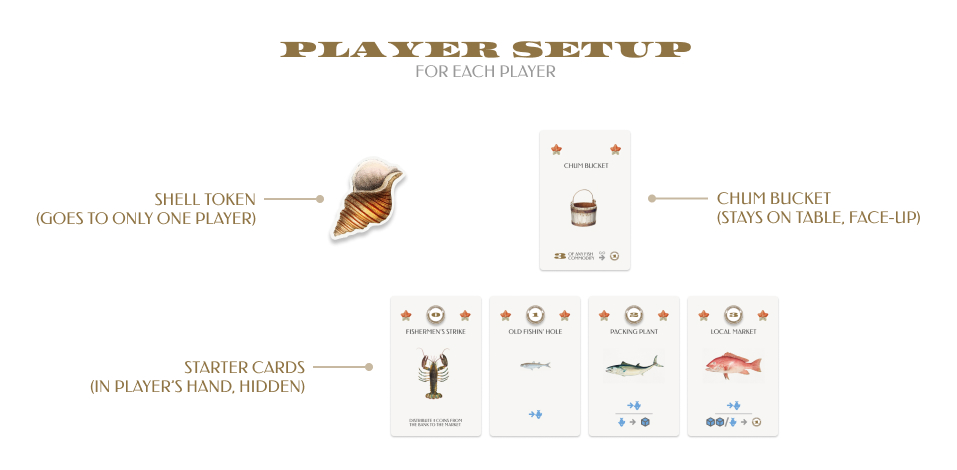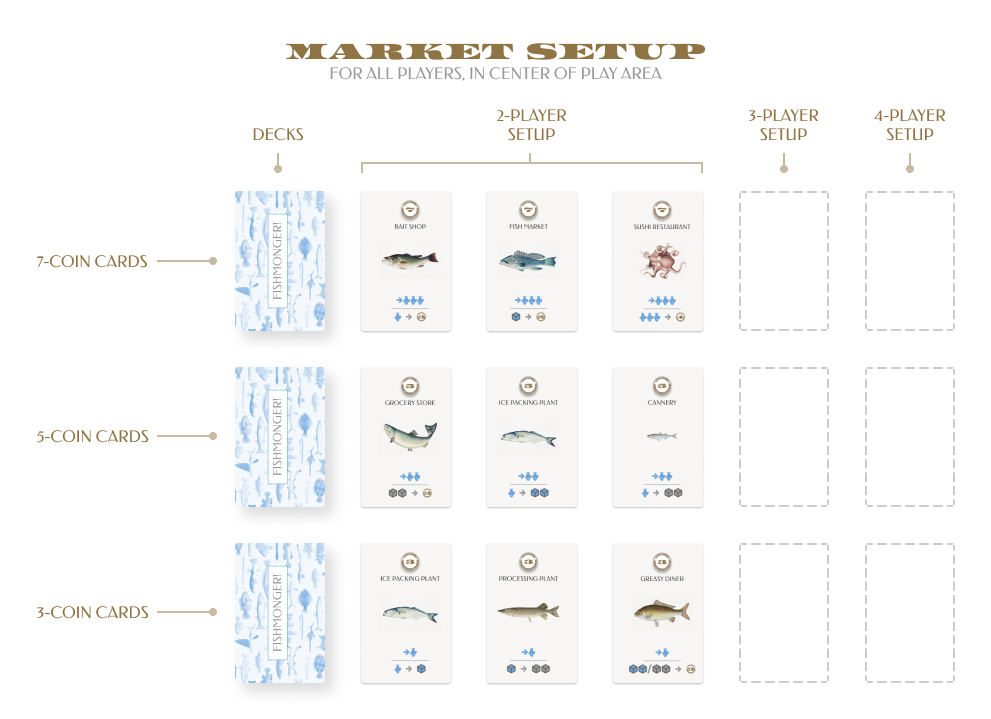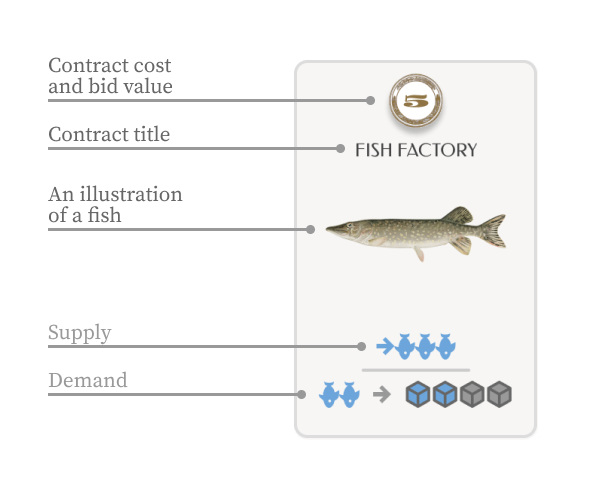Rules
Components
- Starter contracts cards
- Contracts deck
- Coin tokens – punch-outs
- Fish tokens – punch-outs
- Frozen fish – blue wooden cubes
- Canned fish – grey wooden cubes
Set up
Each player gets one set of the three starter contract cards (marked with seashells):
- 1 Chum Bucket
- 1 Packing Plant
- 1 Local Market
These cards go into the player’s hand, hidden from the view of other players. Set all unused starter contract cards to the side and out of the game.
Each player gets three coins.

Shuffle the Contracts deck, and lay five cards in a row, face-up, in the center of play.

Bidding
At the beginning of each round, each player may choose to bid or pass.
Bidding players bid simultaneously by placing contract cards from their hands face down in front of them. The combined value of the coins at the top of the card is the value of the bid. Cards that are bid at the beginning of a round cannot be used again for the remainder of the round.
The player with the highest bid goes first, followed by the second-highest bid and so on.
Turn
On their turn, a player may — in any order:
- Purchase one new contract
- Perform supply and demand actions via the cards in their hand
Passing the bid
If a player passes, rather than bidding, that player may not purchase contracts, and one coin is placed on each contract. That player may play the cards in their hand on their turn.
PURCHASING CONTRACTS
The cards in the center of play are the contracts “up for bid”. The cost for a contract is the value of the coin at the center top, minus any coin tokens on the contract.
If a player can afford a contract that is up for bid and chooses to purchase it, that player pays for the contract by distributing the cost of the contract across the remaining available contracts. The distribution must be as even as possible; when the distribution cannot be perfect, the player purchasing the contract chooses which contracts get an additional coin.
The player then takes the contract and any coins on the contract, places the card in their hand and the coins in their pool, and replaces the card with one from the deck.
EXPIRED CONTRACTS
The instant a contract up for bid gains a number of coins equal to the value of the contract, it expires. Remove the card, return the coins to the stockpile, and replace the card with a new one from the deck.
SUPPLY & DEMAND
A player may use the cards in their hand to:
- Bid for turn placement
- Play a supply action
- Play a demand action
Each card may only be used once per round, and only one of the above options may be played.
Supply — Gain a number of fish tokens to the right of the blue arrow.
Demand — The player pays the commodities to the left of the arrow in exchange for the commodities to the right of the arrow. If there is no symbol above the arrow, the player may only perform this conversion once per turn. If there is a symbol above the arrow, the player may perform the conversion that number of times in a single turn.
A player using the Demand action must perform the full conversion, paying everything to the left of the arrow per conversion.
Rotting Fish
At the end of a player’s turn, any fish that have not been converted or sold, rot. Return any unused tokens to the stockpile.
Frozen fish and canned fish do not rot, and may be carried over from turn to turn.
WINNING THE GAME
When a player gains 15 coins, any unplayed or unfinished turns of the round are played through. The player with the most coins after all turns have been played wins the game.


